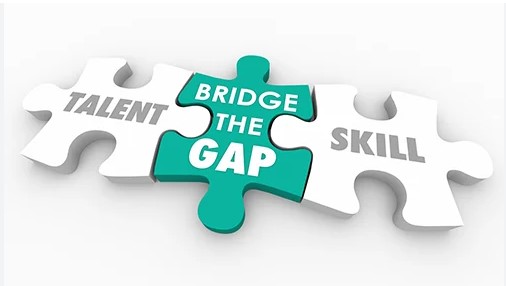Bridging skill gaps within your team is essential for maintaining competitiveness and achieving organizational goals. Here's a structured approach to address these gaps effectively:
- Conduct a Skills Gap Analysis: Assess your team's current skills against the skills required for optimal performance. This analysis helps identify specific areas where skills are lacking.
- Develop Targeted Training Programs: Based on the identified gaps, design training initiatives tailored to address specific competencies. These programs can include workshops, online courses, or mentorship opportunities, ensuring they align with both individual and organizational needs.
- Encourage Continuous Learning: Foster a culture of continuous learning by providing resources and support for ongoing development. Encourage team members to pursue further education, attend industry seminars, or participate in professional networks to stay updated with industry trends.
- Implement Cross-Training: Encourage team members to learn each other's roles through cross-training. This approach enhances team flexibility and ensures that critical tasks can be managed even in the absence of specific individuals.
- Provide Constructive Feedback: Offer regular, constructive feedback to team members regarding their performance and development progress. This feedback should be specific, actionable, and supportive, helping individuals understand their strengths and areas for improvement.
- Recognize and Reward Development Efforts: Acknowledge and reward team members who actively engage in skill development. Recognition can be in the form of public acknowledgment, career advancement opportunities, or other incentives, motivating others to invest in their professional growth.
- Set Clear Expectations and Goals: Clearly define the skills and competencies required for each role within the team. Establish measurable goals to track progress and ensure alignment with organizational objectives.
- Utilize Mentorship Programs: Pair less experienced team members with seasoned professionals to facilitate knowledge transfer and skill development. Mentorship fosters a supportive learning environment and accelerates skill acquisition.
- Leverage Technology and Tools: Implement tools and platforms that facilitate learning and development, such as Learning Management Systems (LMS) or collaborative platforms. These tools can provide access to resources, track progress, and encourage engagement.
- Evaluate and Adjust Strategies Regularly: Continuously assess the effectiveness of your skill development initiatives. Gather feedback from team members, monitor performance metrics, and make necessary adjustments to ensure the strategies remain relevant and effective.
-
By systematically assessing and addressing skill gaps, fostering a culture of continuous learning, and providing support and recognition, you can enhance your team's capabilities and drive organizational success.
Disclaimer
The contents of this blog are provided by a third-party vendor on behalf of Job Shubharambh (OPC) Pvt Ltd . All rights, including copyright, to the content within this blog remain the sole property of Job Shubharambh. The information and opinions expressed in the blog posts are those of the third-party vendor and do not necessarily reflect the views or opinions of Job Shubharambh. While, we strive for accuracy and quality, we do not guarantee the completeness, accuracy, or reliability of the information presented in these blog posts. Readers are encouraged to consult additional sources and exercise their own judgment when interpreting or implementing any information found in this blog. Job Shubharambh is not responsible for any actions taken based on the information provided in these blog posts, and we disclaim any liability for errors, omissions, or consequences arising from the use of this content.
